According to the State of Michigan, the total number of COVID cases in Michigan rose to 58,035 on June 3, an increase of 304 cases from the previous day. The daily total was equivalent to 581 cases per 100,000 people (Chart 4). Of those 304 cases, 140 were documented in Southeastern Michigan, which was equal to 41 percent of the new cases. In Chart 1 we show that the State total for the number of COVID cases on June 1 was 57,516–a five-day rolling average. The five-day rolling average for the total number of COVID cases (Chart 1) reflects a smoother curve and adjusts for fluctuations in testing and/or the quality of reporting or failure to report.
Chart 2 shows that, based on the five-day rolling averages, the growth of new COVID cases in Southeastern Michigan has further flattened overall. On June 1 the number of cases in Detroit reached 11,039, the highest in the region, and Wayne County reported the second highest number of cases at 9,386. On June 1, the five-day rolling average for the number of COVID cases in Oakland County was 8,389, and Macomb County reported 6,703.
The City of Detroit had 1,649 COVID cases per 100,000 people as of June 3, a small increase from 1,645 the day before (Chart 3). This is based upon a reported increase of 23 new COVID cases, bringing the total number of COVID cases in Detroit to 11,091. Wayne County reported 878 cases per 100,000 people, and Oakland County had 670 cases per 100,000 people. These per capita rates were based upon 9,450 total cases for Wayne and for 8,425 Oakland. Macomb County reported 775 cases per 100,000 people, which is based upon 6,769 cases.
The daily data highlighted in these posts is from Michigan.gov/coronavirus, where data is updated daily at 3 p.m. Historical data were supplied from covidtracking.com, which republishes COVID data from the State. Additionally, the case totals do not reflect the number of people who have recovered, just those who have been infected.
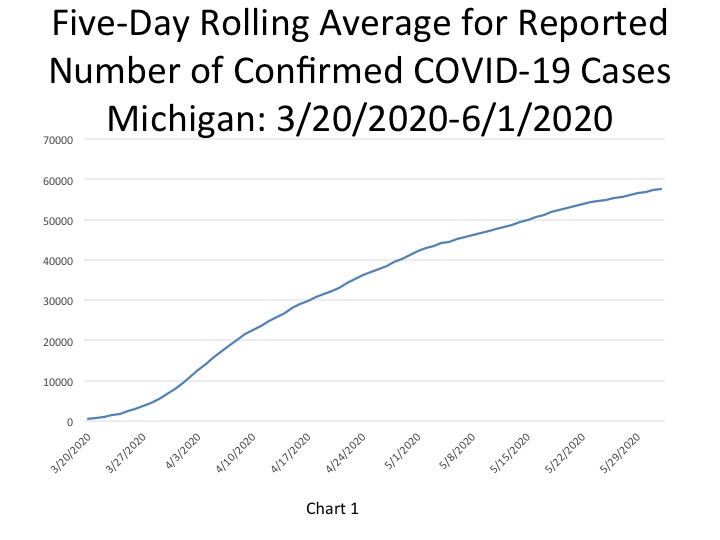
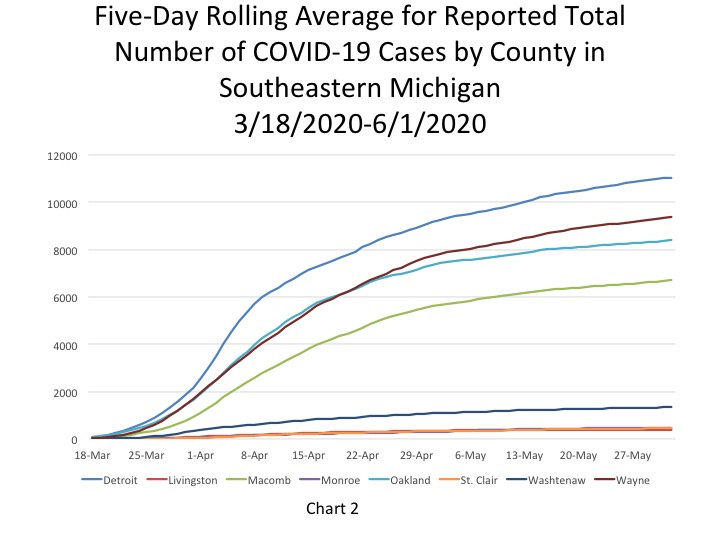
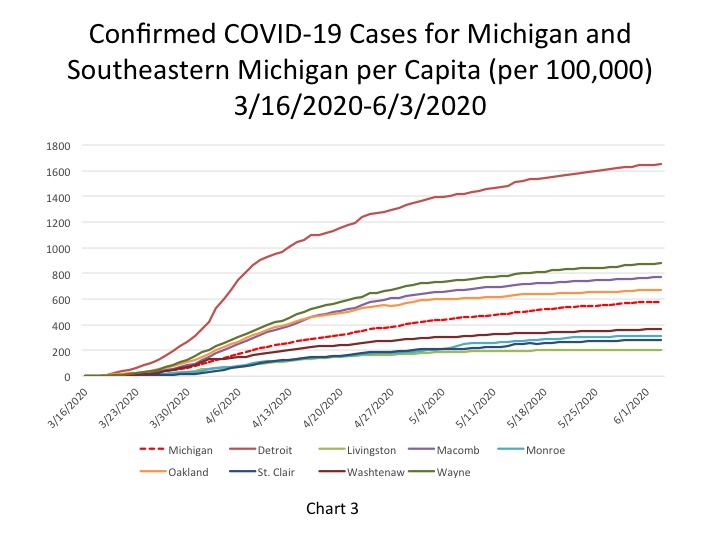
Chart 4 shows that Detroit reported the highest number of daily cases, according to the five-day rolling average, at 32. However, Macomb County wasn’t far behind, reporting 31 new cases on June 1. Macomb County’s numbers slightly increased from the day prior while Detroit’s numbers decreased by 1.
On June 3, the per capita rate for the number of new daily COVID cases per 100,000 people was 3 for the State, which was equivalent to 304 new cases. This was an increase from the day before . Detroit also had a per capita rate of 3 on June 3, which was equivalent to 23 new COVID cases. Both Wayne and Macomb counties had higher per capita rates than Detroit and the State. On June 3, Macomb County reported 6 new COVID cases per 100,000 people and Wayne County reported 5 new COVID cases per 100,000 people. These rates were equivalent to 49 and 50 new cases, respectively. Oakland County had a per capita rate of 1, which was reflective of 13 new reported cases. Overall, 140 new COVID cases were reported in Southeastern Michigan on June 3. This is an increase of 94 new cases over the 43 new cases reported from the day prior.
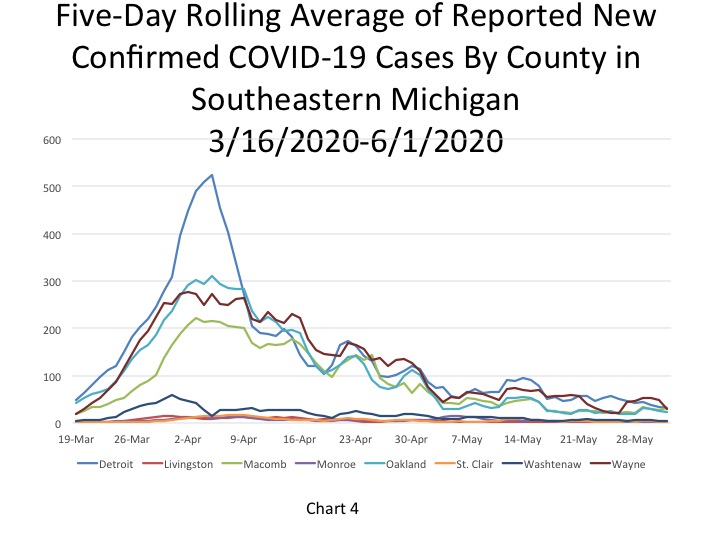
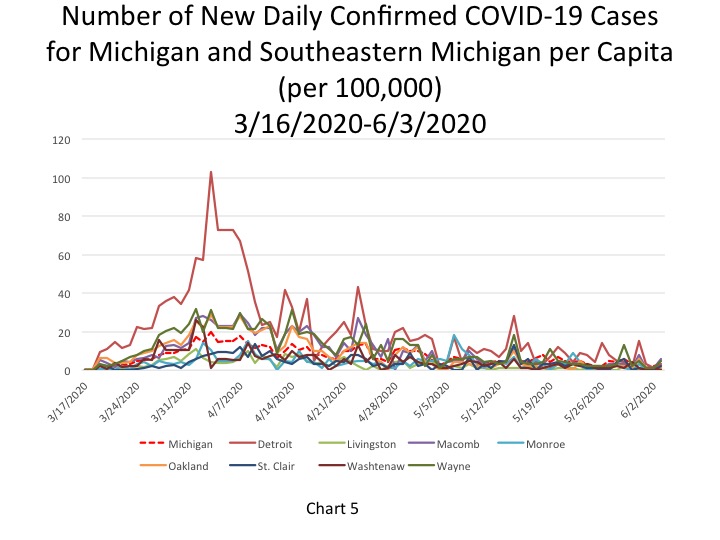
In Chart 6, the five-day rolling average for the number of deaths in Michigan shows a continuing slow increase (a lagged number of 5,515 deaths, an increase of 33 deaths). The actual reported COVID-19 deaths on June 3 was 5,570, an increase of 17 deaths from the day prior. Of those 17 deaths, Southeastern Michigan accounted for 16 of them. While the number of new daily cases increased in Michigan on June 3 the number of new daily deaths did not. On the June 2 the state had reported 37 deaths. However, the State did not tack on additional COVID deaths discovered through death certificate comparisons as it did the day prior.
Chart 7 (a 5-day rolling average) portrays how Detroit continues to report the highest cumulative number of deaths at 1,376 on June 1. Wayne County had the second highest total at 1,090 on June 1.
The State of Michigan, along with Macomb and Oakland counties, were the only three in the data examined to experience a per capita increase in the total number of COVID deaths per 100,000 people on June 3. The State’s rate increased to 56 COVID deaths per 100,000 people, which was equivalent to 5,570 deaths (17 new deaths). Macomb County’s per capita rate increase by 1 to 90; Oakland County’s rate also increased by 1 to 80. These rates were equivalent to 826 and 1,003 total deaths, respectively. In Detroit, the per capita rate remained at 205 (representing 1,380 deaths) and in Wayne County there were 102 COVID deaths per 100,000 people (1,098 total deaths). Macomb County had the highest single day death count in Southeastern Michigan on June 3; 8 COVID deaths were reported. One death was reported in Detroit.
Chart 9, the five day rolling average of deaths, shows the number of new statewide deaths increased by 1, to 33, on June 1. Furthermore, Chart 10 shows how the number of deaths in Southeastern Michigan remained stagnant, except for Wayne County. Wayne County reported 6 new deaths on June 1, which was a decline of 1 from the day prior. Both Wayne and Oakland counties reported 6 new deaths while Macomb County reported 7 new deaths, the highest daily total in the region. These numbers are based on five-day rolling averages.
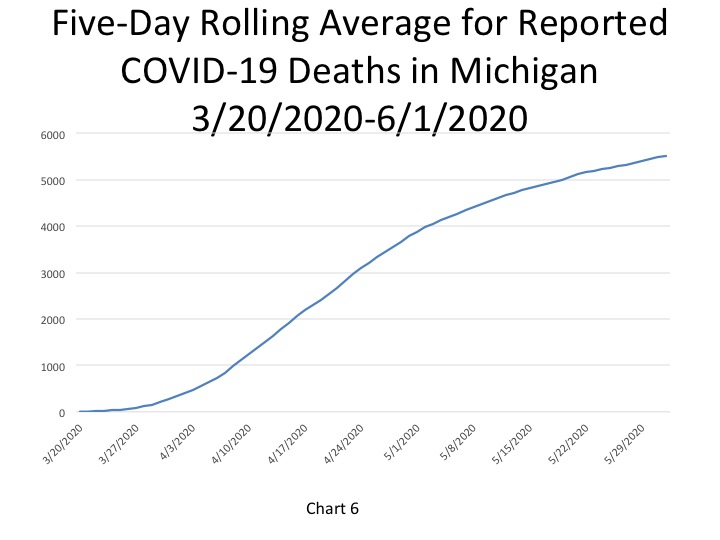
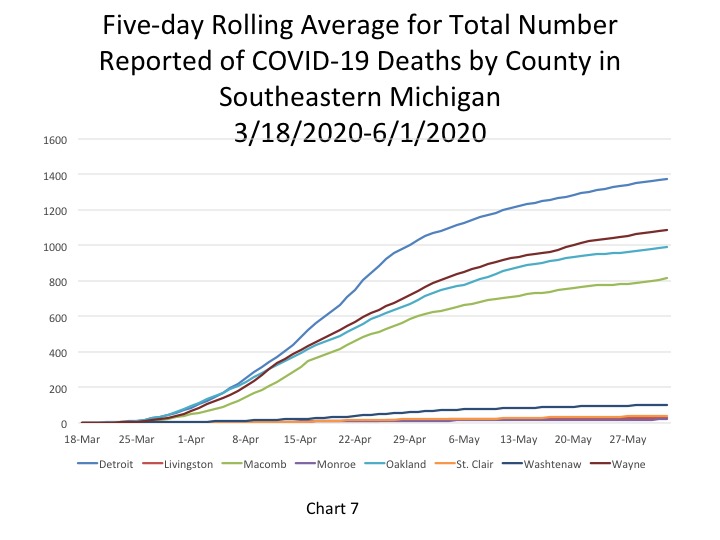
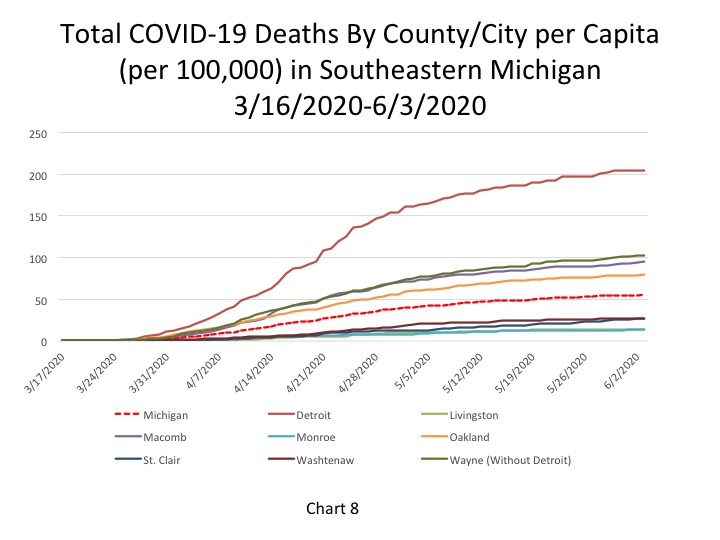
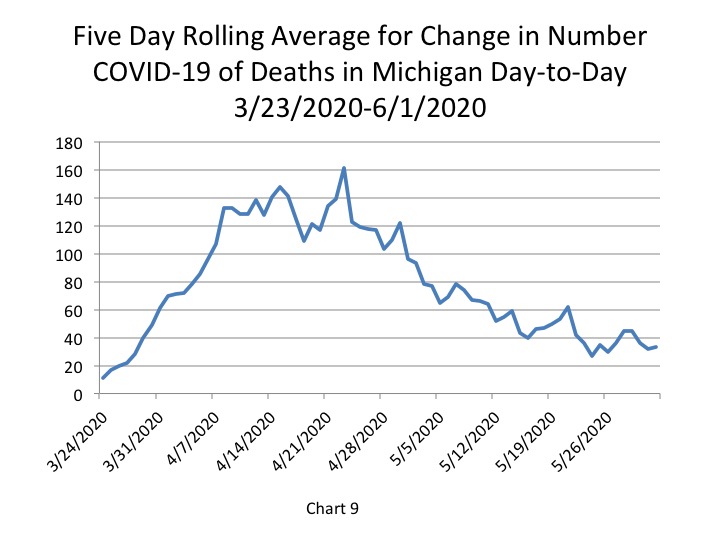
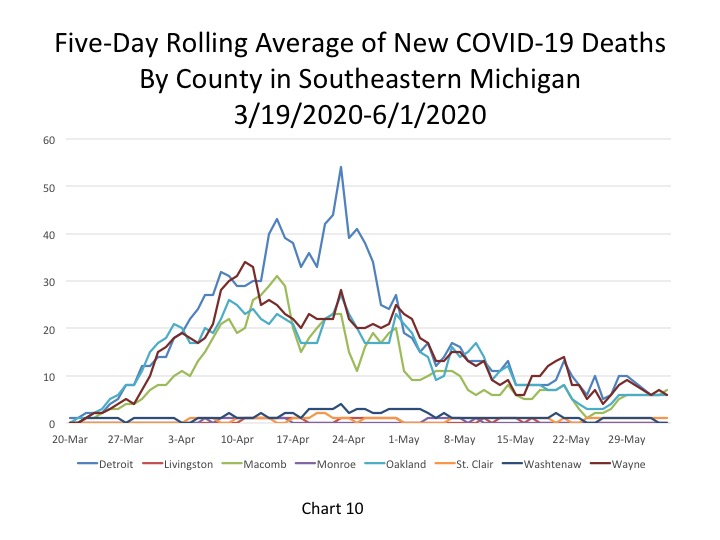
On June 3, the fatality rates continued to remain fairly stagnant across the region and for the State. The most notable is the State now reporting a fatality rate of 9.6 percent for 16 days in a row.
One reason we may be seeing such high fatality rates in Michigan is due to the low testing rates. When only having-presumably-a lower of number confirmed COVID cases than is actually likely due to the limited availability of tests, the fatality rate appears higher because the base comparison is smaller than it might be.
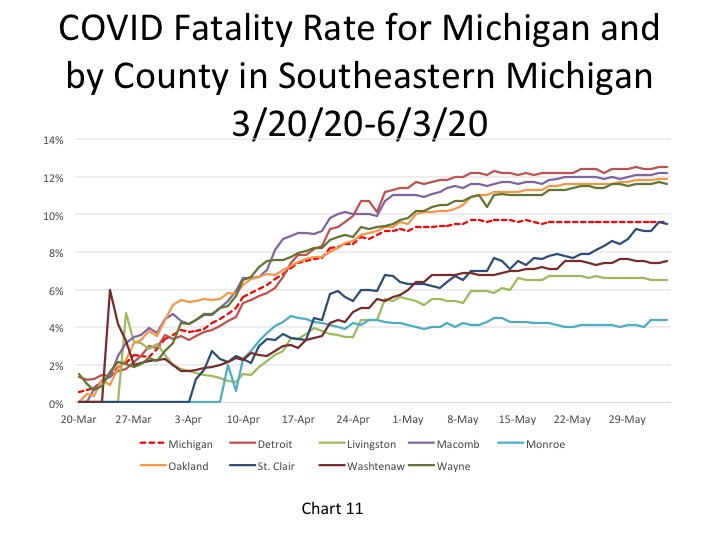
As the numbers continue to decline compared to where they were two months ago or even weeks ago, hospitals are now accepting visitors, and restaurants are preparing to open. This, and much more, represents a shift in how the spread of the virus is being dealt with and that is because leaders believe numbers are low enough to allow such actions. Restrictions, such as wearing face masks and maintaining a six-foot distance, remain in force however.